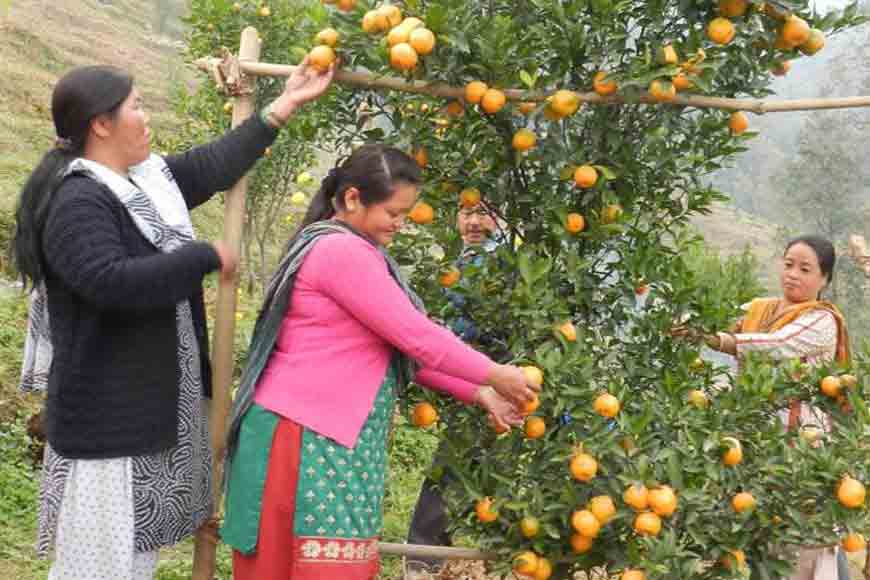Why were Darjeeling oranges smaller in size this year?

The orange orchards of Darjeeling, Mirik, Bijanbari, Kurseong, have always been famous for their delicious oranges. When the rest of the world produces oranges that are luscious, Darjeeling oranges always had an identity of their own, thanks to their sweet taste. Though considered to be one of the best in the world, these oranges are facing a rapid decline in recent years.
This year, the much-awaited citrus delicacy was spotted in some city markets, but the prices were very high. In adjoining districts where oranges are being sold this season, the produce from Darjeeling is very low, only about 10 per cent of the total amount. Horticulturists and scientists are worried as they study the trend and find that not only are the annual yield decreasing, the quality is also getting affected and the size of the fruit is reducing steadily.

The orange industry of Darjeeling was affected by a wide-spread viral dieback attack. Dieback refers to the deadly plant disease caused by Phytophthora cinnamomi. The symptoms of this virus first appear on older leaves. The mid rib and veins become yellow and later turn into orange yellow. Molting of leaves take place. The new leaves are swollen in shape and on touching some, bristles are felt. Following year even the interveinal areas become chlorotic. Plant growth is stunted and appears bushy. Gradually the whole plant dies from top to bottom.
Oranges in Darjeeling are cultivated by individual horticulturists in around 3.5 thousand hectares of land and they address their problems individually. They have been noticing how the yield has been reducing and the quality of the fruit has also been deteriorating, losing much of its sweetness. Full grown trees laden with oranges are dying. But many scientists are confused about this and cannot ascertain if this syndrome is due to dieback viral attack. There are specific instances of dieback viral attack affecting orchards in four districts of Sikkim in the past. However, if that is confirmed, scientists assure the dieback syndrome can be cured with proper care and medication.
But many feel this could be due to an attack of the Citrus Tristeza virus. The deadly disease has led to the death of millions of Citrus trees all over the world and has rendered other millions useless for production. Average age of orange trees in Darjeeling is another factor causing low yield. Most trees are between 22-25 years old and well past their prime. Usually, a high yield is common when trees are between 15-20 years old. Therefore, trees should be felled after 20 years and replaced by new ones. A number of scientists, working in the Central Institute for Sub-Tropical Horticulture, a wing of the Indian Council for Agricultural Research, also agree and vouchsafe that the average age of the trees could be a detrimental factor to production. If the orchard owners agree to the proposal, the government is willing to provide all help.
Lack of scientific management of orchards is also responsible for low yield. The danger is compounded when orchard owners cultivate ginger, potato and turmeric in the same plot, next to the orange trees. While tilling the land, roots of orange trees are inadvertently severed, thus weakening the trees. These exposed regions of the trees become susceptible to pathogens, leading to infection. The infection spreads to other parts of the trees and they gradually wither and die. Urgent steps have to be taken to secure the healthy growth and ensure high yield of Darjeeling oranges. Scientific ways of cultivation and use of organic manure have to be introduced immediately to revive oranges – the pride and glory of the Darjeeling hills.









